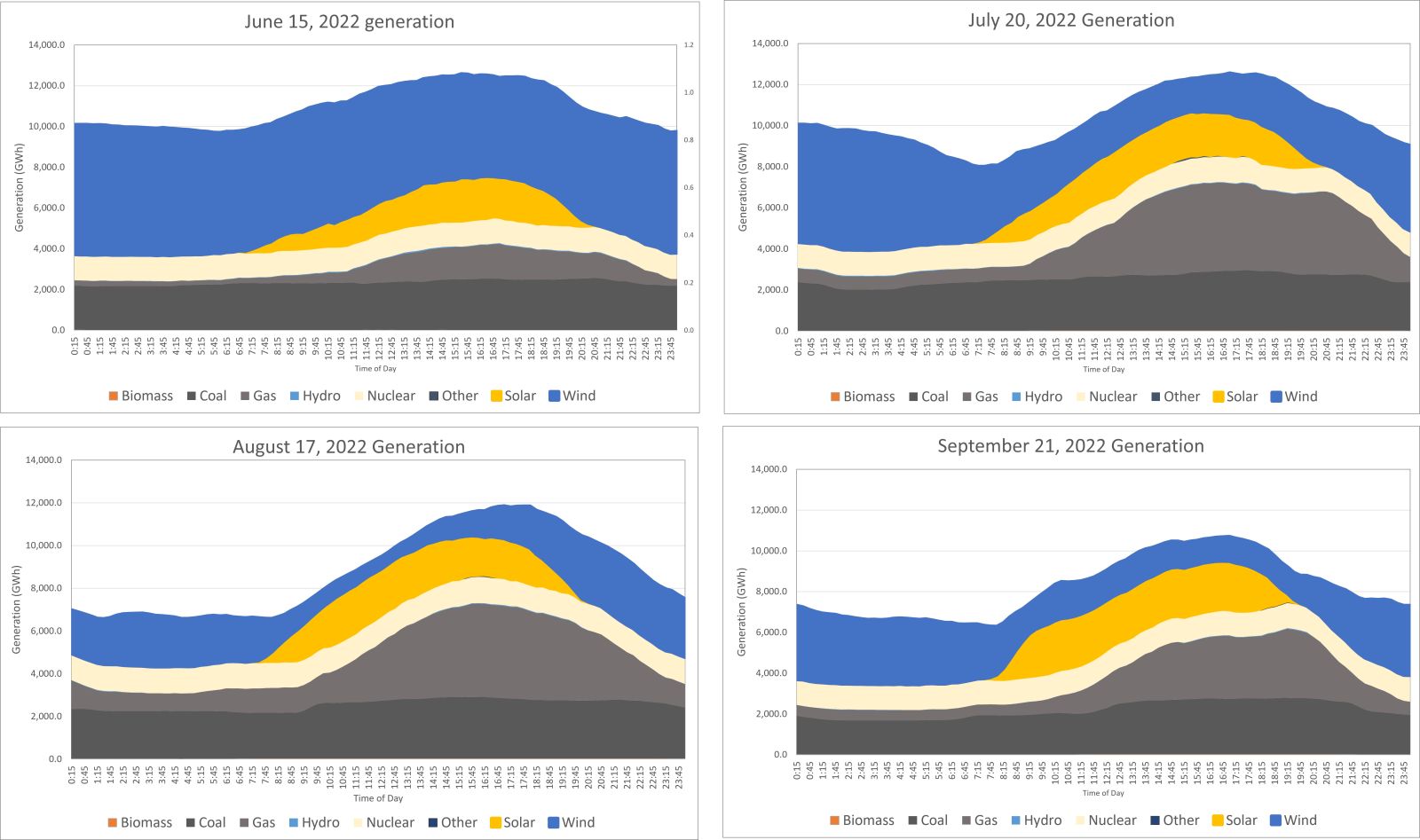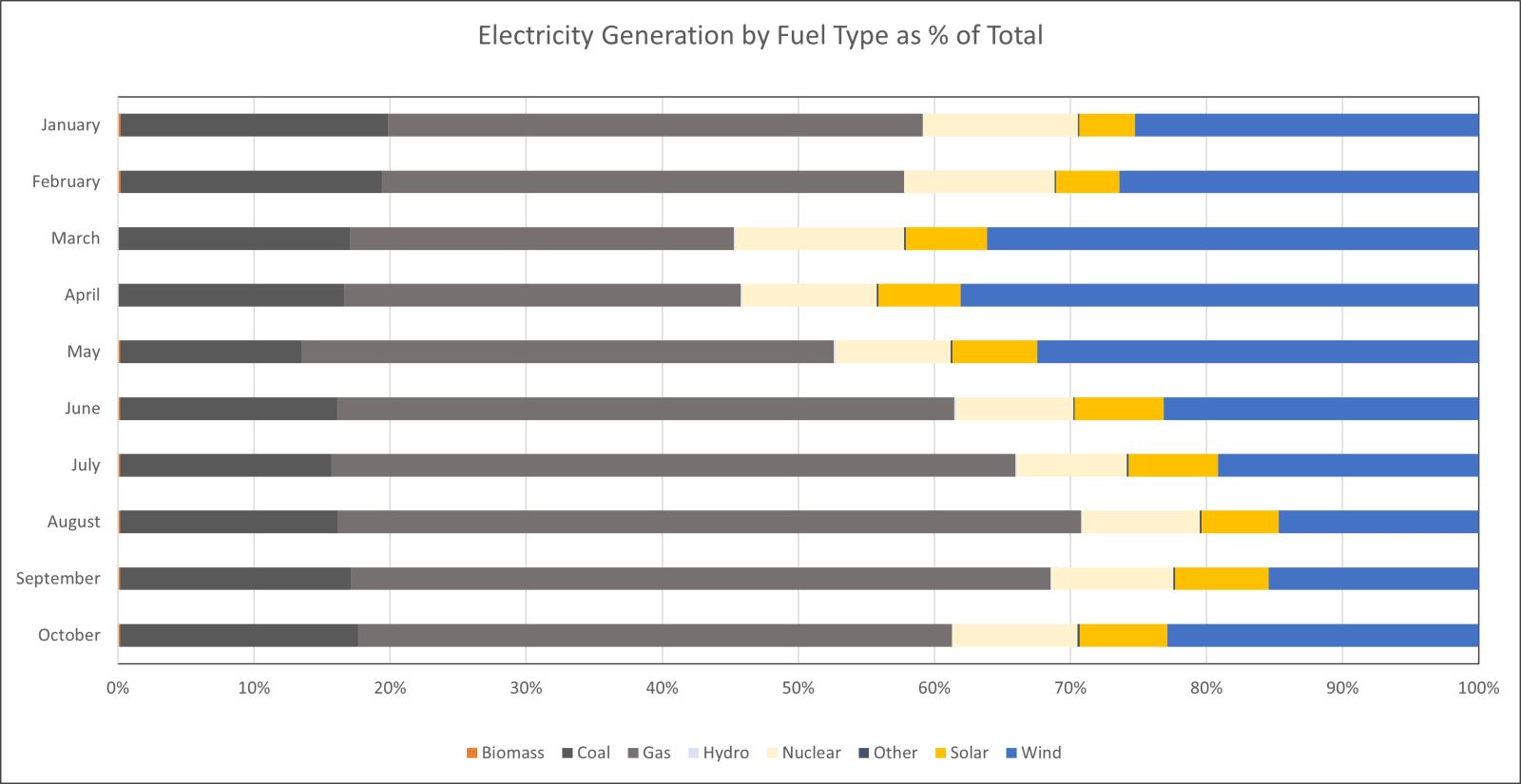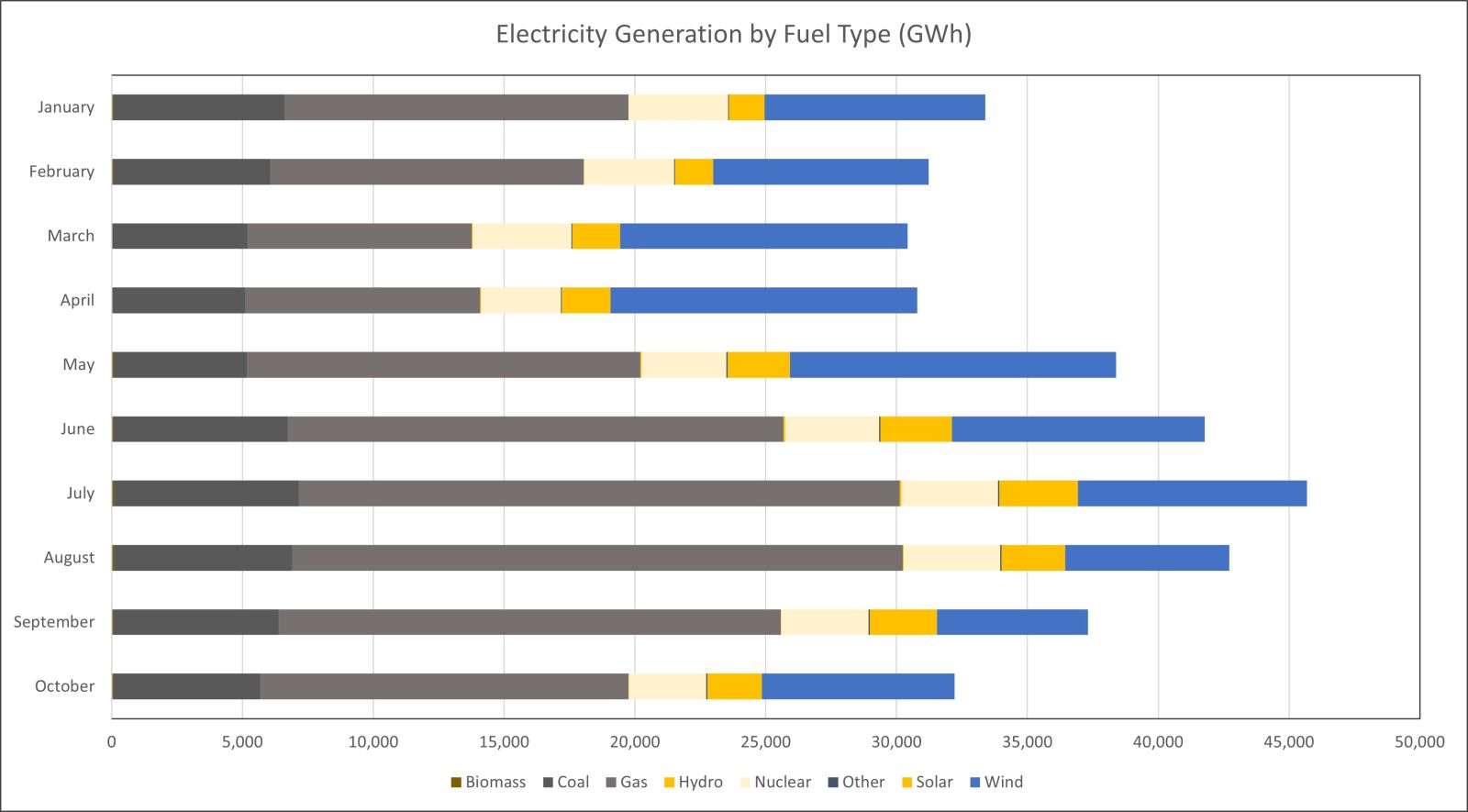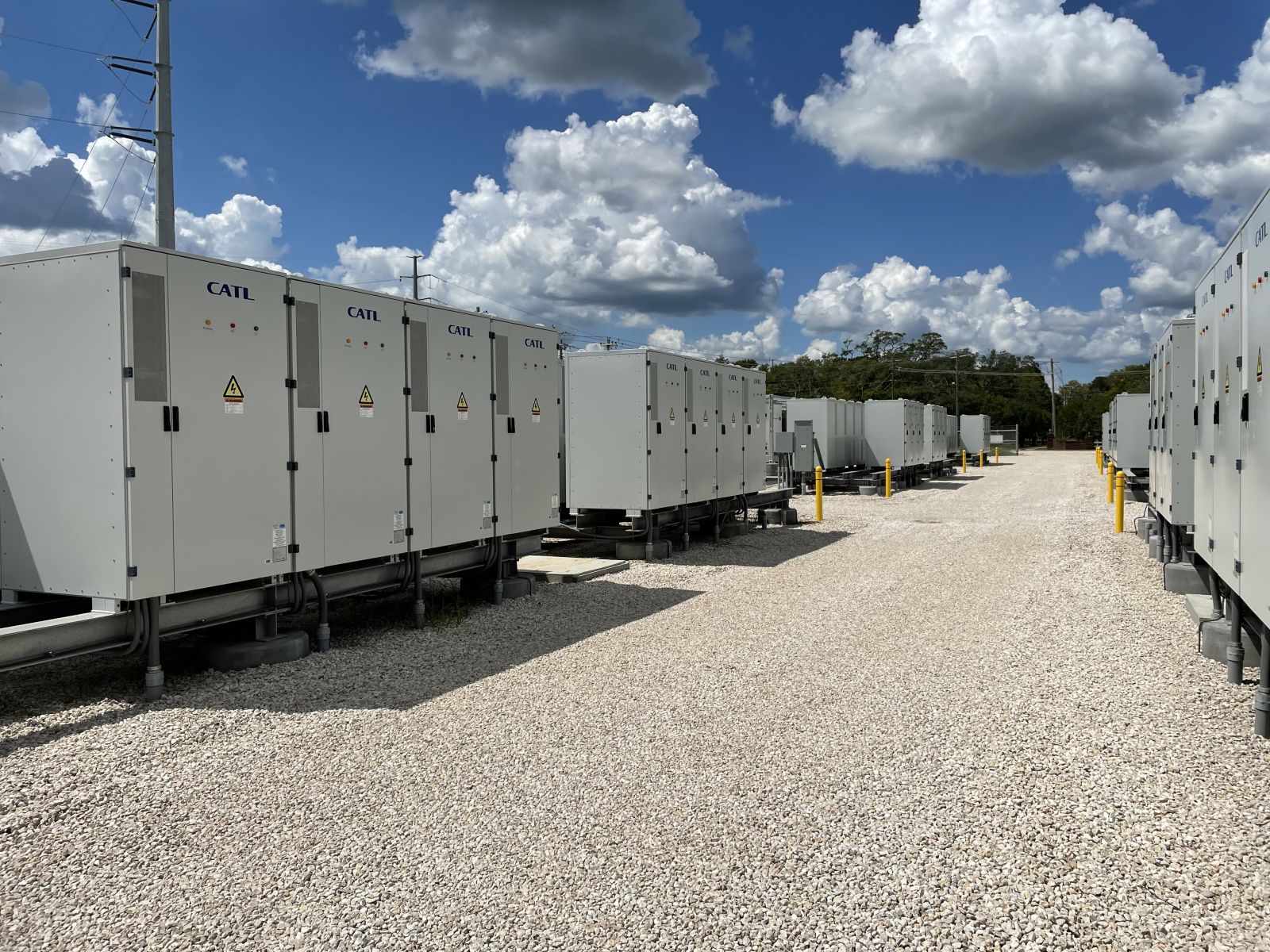When it’s Time to Change: How the ERCOT grid is moving toward larger scale renewable energy integration
The Energy Reliability Council of Texas (ERCOT) electricity grid has had many challenges over the last few years. From the heat waves that cause year-over-year increasing demand and extreme peaks, to cold snap winter storms that cause unstable electricity supply and tens of billions of dollars in damages, the grid (which had been purposefully islanded off from other neighboring grids) has become strained.
Texas already has deep penetration of wind and solar generation. As more solar and wind resources are added, its grid will face even more intermittency problems, as an increasing percentage of total generation fluctuates with cloud cover and wind speed. Adding to these woes is local congestion that stymies the grid’s ability to further adapt to increases in renewable generation. Growth in electricity demand, from electrification of transportation and heating, population growth, and a higher need for cooling, will add yet more strain.
This is not a unique problem: while Texas is already experiencing these challenges, other states and countries are not far behind. As renewables adoption expands across the globe, electricity grids that had been developed to rely on a very different kind of generation resource – one that has a steady, consistent output with long ramp up and down times – will need to adapt and change. With this transition, energy storage will play an increasingly more critical role.

Since the Texas electricity grid is an island, i.e., the grid operator cannot depend on generation from other states to meet peak demand, the state must look for local solutions. For spikes in demand for electricity, the old solution used to be adding peaker plants (typically run on gas, oil, or even diesel), or adding capacity at thermal generation plants (such as those burning natural gas), and building new transmission lines to connect everything together. All of these solutions are costly, and can take a decade to develop, design, and install. Peaker plants in particular, are difficult to economically justify; given their high initial costs, maintenance costs, fuel supply cost, and dependency, their cost per kWh generated becomes prohibitively expensive. ERCOT, just like the rest of the United States, is looking to strategically located energy storage projects to provide a solution: Increase available electricity during peak times; smooth out intermittency from solar and wind; and ease grid congestion.
Project location is the first critical consideration. Installing energy storage projects close to load — high-demand areas such as population centers — gives the electricity grid and ratepayers a reprieve from expensive transmission line construction. With a small footprint required (such as multiple 50 MW energy storage plants around a city), storage projects can be close enough to provide critical support where and when it’s needed.

Intelligent project hardware layout and design, scoping, and selection help ensure grid resilience. In today’s battery storage projects, distributed and parallelized design keeps any one installation operational, even if one battery rack or inverter must be taken out of service for maintenance or outage. This redundancy provides much-needed stability for services and electricity supply.
As weather patterns become more unpredictable, and the possibility of flooding increases across the nation, physical system installation becomes another critical consideration. For example, during a rainstorm or hurricane event, when electricity outages are more likely (and have a more destabilizing impact on the community), a much-needed battery energy storage system cannot provide value if it’s sitting in two feet of floodwater. Consequently, a calculation must be made on the current and future flood risk of any given site to ensure the highest availability of a system; even if risers or other mitigation measures increase construction costs up front, they ensure system availability for the long run.

Winter events can be a grid-destabilizing event when power plants fail, as was evidenced during the devastating Arctic blast in February 2021 that resulted in electricity outages across much of Texas. Energy storage can decrease the likelihood of such a catastrophic outage. When power plants go offline, grid frequency begins to drop from the standard 60Hz benchmark. If the deviation is not corrected quickly enough at sub-second order, a section of the grid will collapse. This leads to blackouts, power disruptions, and can even cause damage to customers’ electronics and motors. If power plants are going offline, distributed energy storage installations could provide distributed frequency stabilization support that keeps a local problem from becoming a regional one.
Installing the necessary hardware for the power plant is the starting point of leveraging energy storage as a solution to grid challenges. Developing intelligent, adaptable control system software that can manage and monitor the storage assets is the next step. Response time, fault management, and tracking are all important aspects of any storage power plant software. Power Plant Control (PPC) software and energy storage systems as whole must be able to respond at grid speeds, which are typically well under a second (under ¼ second, in ERCOT’s case). PPC must also be able to re-balance the plant in the case of any one component failure, respond and perform stabilization functions (i.e., frequency and voltage regulation) to fully realize the value of the energy storage system, and have room to grow for future grid needs. PPCs must also operate on redundant hardware to ensure no loss of system control, should any one module malfunction. Careful planning in software design and redundancy in the programmable logic hardware help support high availability times for PPCs, ensuring systems are available when called upon.
 Looking ahead, storage system integrators and power plant software developers will need to add functionality to learn and understand the grid system operation under very different conditions, and be prepared through dispatch prediction and demand forecasting. Specifically, predictive algorithms for weather that forecast wind and solar production, which can then be used to dispatch storage systems at critical times, will be crucial for grid operations.
Looking ahead, storage system integrators and power plant software developers will need to add functionality to learn and understand the grid system operation under very different conditions, and be prepared through dispatch prediction and demand forecasting. Specifically, predictive algorithms for weather that forecast wind and solar production, which can then be used to dispatch storage systems at critical times, will be crucial for grid operations.
In addition to the build out of traditional lithium ion 1-, 2-, and 4-hour storage in ERCOT, nationally, and worldwide, grids will see more and different kinds of battery technology, including long-term storage. Integrating these technologies, including new production from US battery storage factories, will be integral to creating competitive solutions to the growing challenges from increasing demand due to electrification, increase in population, and an aging transmission infrastructure.
Ray Saka is the Vice President of Sales, Services and Product Management at IHI Terrasun, Daria Mark is the Marketing Manager at IHI Terrasun, and Chris McKissack is the CEO of Glidepath Power Solutions.
IHI Terrasun | www.ihiterrasun.com
Glidepath Power Solutions | glidepath.net
Author: Ray Saka, Daria Mark, and Chris McKissack
Volume: 2023 January/February









